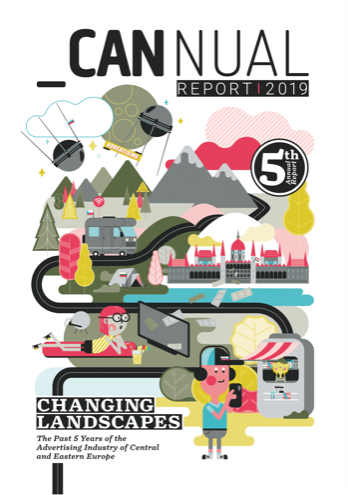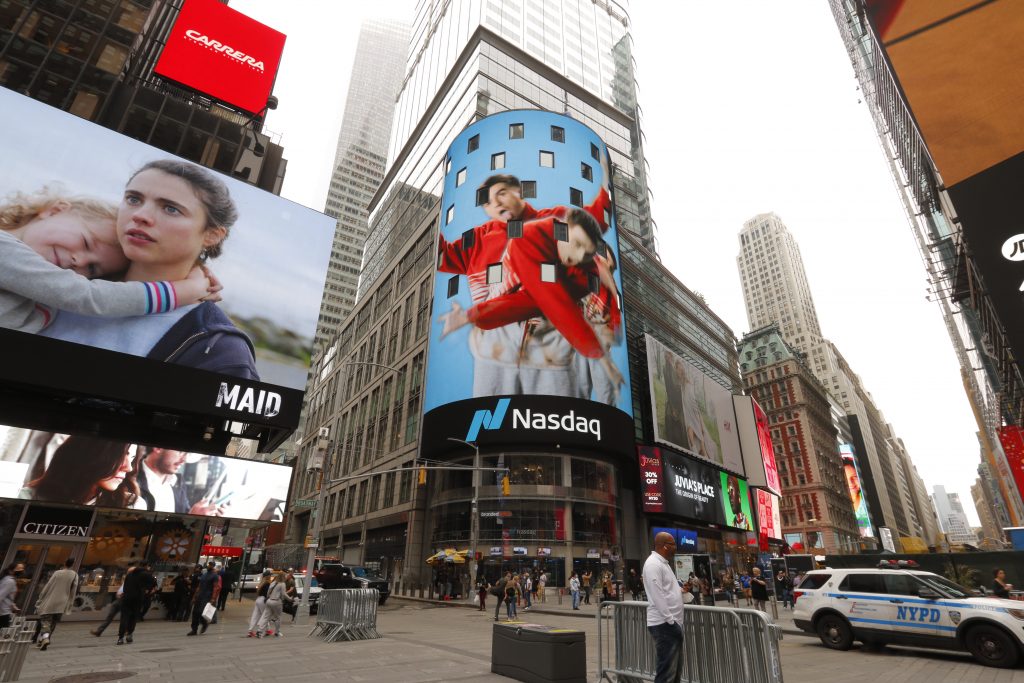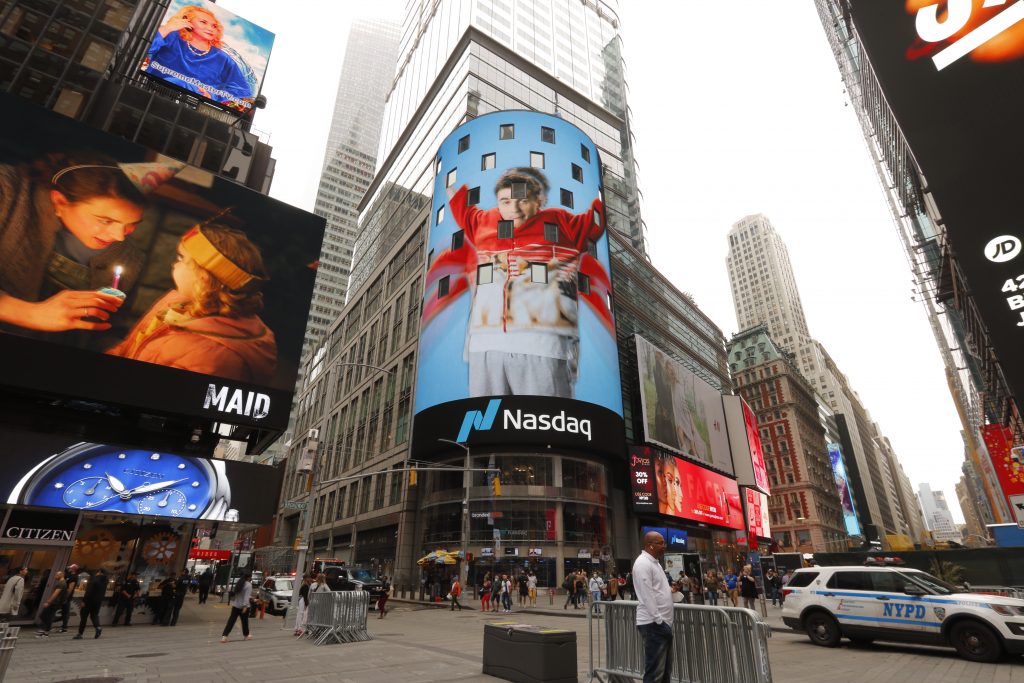Media People będący członkiem weCAN, sieci niezależnych agencji reklamowych z Europy Środkowej i Wschodniej opublikował wraz z partnerami, piątą coroczną publikację CANnual Report. Premiera odbyła się na konferencji weCAN w Bukareszcie 7 listopada.
Raport weCAN podsumowuje wyniki rynku reklamowego w 15 krajach Europy Środkowej i Wschodniej w okresie 2014-2018, ponadto zawiera prognozy trendów na kolejne pięć lat. Oprócz danych na temat nawyków konsumentów mediów oraz wydatków na reklamę w regionie, publikacja zawiera także artykuły ekspertów weCAN oraz innych liderów branży, takich jak Agnieszka Kosik, szef Facebook Polska, Illés Vadász, kierownik ds. Przemysłu Google Węgry, Mojca Briščik, prezes Golden Drum Festival oraz dr Ákos Kozák, dyrektor Instytutu Badań Rynku GfK Hungária.
Dwa przełomowe wydarzenia w przeciągu zaledwie pięciu lat
Raport wskazuje na to, że dzięki dobrobytowi gospodarczemu i rozwojowi cyfrowemu łączna wartość wydatków na reklamę w regionie osiągnęła w 2018 roku 13,8 mld euro, czyli ponad 3 mld euro więcej niż pięć lat wcześniej.
Liczba osób w regionie regularnie korzystających z internetu wzrosła od 2014 o 10%, ponadto w większości krajów reklamodawcy szybko dostosowali się do zmieniających się nawyków konsumentów mediów. Szybki wzrost konsumpcji treści internetowych pociągnął za sobą gwałtowny, bo aż 104% wzrost budżetów przeznaczanych na reklamę cyfrową. W wyniku tego wydatki na reklamę online w Europie Środkowo-Wschodniej wyniosły w ubiegłym roku 5,7 mld euro, przekraczając tym samym kwoty przeznaczane na reklamę w telewizji.
Jednak wyprzedzenie budżetów telewizyjnych przez wydatki internetowe stanowiło tylko jeden z kilku przełomowych momentów na rynku reklamowym w Europie Środkowo-Wschodniej w ciągu ostatnich lat. Podczas gdy reklama drukowana, jako jedyny rodzaj mediów, notuje stały spadek nakładów (-28%), rynek reklamy zewnętrznej umiarkowanie się umacnia (+10%). Media internetowe do tego stopnia przejęły publiczność korzystającą wcześniej z reklamy drukowanej, że reklama zewnętrzna stała się trzecim najpopularniejszym rodzajem powierzchni reklamowej po telewizji i internecie, wyprzedzając druk.
Rynek reklamowy w krajach Europy Środkowo-Wschodniej w latach 2014-2018
Reklamodawcy w krajach Grupy Wyszehradzkiej najszybciej dostosowali wydatki na reklamę do nowej, cyfrowej ery. Czechy były pierwszym rynkiem, na którym wydatki na reklamę online przekroczyły wydatki na reklamę telewizyjną; następnie doszło do tego na Węgrzech w 2015 roku i wreszcie w Polsce w 2018 roku. Do grona tych krajów już wkrótce może dołączyć także Słowacja. Oprócz tych rynków jeszcze trzy kolejne dotarły do tego etapu od 2014 roku: Litwa (2016) oraz Ukraina i Rosja (2018). Ten ostatni kraj został prawdziwym cyfrowym supermocarstwem, odpowiadając za prawie połowę wszystkich wydatków na reklamę online w regionie.
Pozycja w rankingu weCAN
Pięć lat temu sieć weCAN stworzyła indeks, aby móc oferować reklamodawcom szczegółowe informacje o stanie rynków reklamowych w regionie. Wartość w rankingu weCAN pokazuje procent wydatków na reklamę na mieszkańca w ramach nominalnego PKB danego kraju, pokazując, czy rynek reklamowy jako sektor gospodarczy jest silniejszy czy słabszy niż sugerują ogólne wyniki gospodarcze danego kraju.
Od 2014 roku wartość rankingu weCAN wzrosła dla sześciu krajów: Czech, Ukrainy, Węgier, Polski, Słowacji, Rosji i Litwy. Oznacza to, że w tych krajach rynek reklamy rozwijał się bardziej dynamicznie niż pozostałe obszary gospodarki. Jak widać są to te same kraje, w których wydatki na reklamę internetową wyprzedziły telewizję, co dowodzi, że branża reklamowa, podobnie jak na rynkach zachodnich, rozwija się bardziej, kiedy segment cyfrowy przejmuje wiodącą rolę od tradycyjnych mediów.
Od samego początku istnienia Canual Raportu, piszemy o rynku CEE, który zdecydowanie różni się od innych regionów Europy ale jest również bardzo niejednorodny w ramach 16 państw, które go tworzą. Przede wszystkim objawia się to w konsumpcji poszczególnych mediów jak i dynamice wprowadzanych zmian technologicznych. Wspólnym mianownikiem są globalne zmiany kulturowe oraz polityczne, formatowane w świecie digital z wiekszą niż kiedykowliek precyzją za pomocą danych. Teren tych rozgrywek pokrywa się zatem z terenem operacji marketingowowców. Dziś wyzwaniem dla branży stają się zjawiska wcześniej nieznane oraz nowe szanse i niebezpieczeństwa. Świadomość, wiedza, płynąca z naszego komependium jest punktem wyjścia dla pracy działów marketingu, które mierzą się zarówno z lokalnymi jak i regionalnymi działaniami dla brandów – komentuje raport współautorka, Weronika Szwarc-Bronikowska, wiceprezeska domu mediowego Media People.
Całość raportu do pobrania znajduje się tu: https://wecan.net/cannual-report/

























